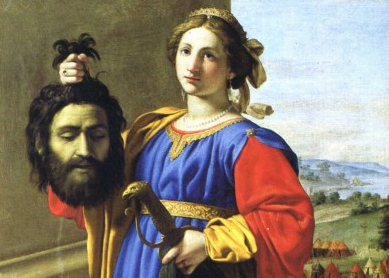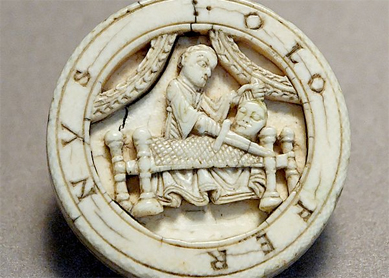Remarkable similarities exist between ancient stories like the book of Judith and contemporary popular comic book narratives about powerful, beautiful, and sometimes violent women who win ideological victories against the world of men.
What similarities exist between Judith’s story and contemporary comic book heroines like Wonder Woman?
The book of Judith focuses on the story of an Israelite widow who feared the Lord and was enraged that the men of her community were unwilling to fight back against a threat from the Assyrian army. Judith takes the task on herself, first seducing and murdering the enemy general Holofernes by cutting off his head. She takes his head back to her community and then orchestrates a public display of the decapitation that causes the opposing army to scatter in fear. Judith is able to accomplish all this, according to the author, because she is beautiful, wise in situations of peril, firm in her convictions, and able to call for and even commit violence when the situation requires it.
As such, Judith is part of a remarkable tradition that stems from and persists in the imaginations of Western male authors: a powerful, even violent, female beauty uses her sexuality and autonomy to win ideological victories at the expense of less competent, wise, or ethical men. From the biblical tradition, we certainly see similar features in writings about Jael in Judges and Esther, both of whom employ their sexual autonomy and commit violence to ensure the continuity of their people and values. However, it will likely not surprise readers that these attributes are common in many narratives about women to the present day and that the attraction such a woman has in male authors’ imaginations is so powerful that she continues to be a feature in film, television, and comic books. In contemporary comic book culture for example, these tropes are replicated in the stories of Cat Woman, Gamora, Black Widow, and—perhaps most clearly—Wonder Woman.
Like Judith, Wonder Woman is defined by her beauty, wisdom, firm convictions, and ability to use violent means when needed. In early versions of her origin story, for example, she is said to have been born blessed by the gods to be as “beautiful as Aphrodite, wise as Athena.” In most media, she is portrayed in highly sexualized ways, wearing very little with breasts and legs partially exposed, in a manner that undoubtedly appeals to the heterosexual male gaze. She is portrayed as committed to high ideals like justice and mercy but, like Judith, she is not above violence when it is necessary. Indeed, perhaps the most exact parallel between the two women’s stories occurs when Wonder Woman snaps the neck of the villain Maxwell Lord to save her Justice League compatriots in Wonder Woman #219.
Why Do These Visions of Female Sexual Power Persist?
A contemporary reader might wonder why these particular visions of female sexuality and power persist. For one, the persistence of these tropes suggests that male authors often imagine femaleness as a sort of power that is both real and a bit anxiety-producing in a patriarchal world. Women, as they are seen in these narratives, are undoubtedly powerful; however that power, which is bound up in sexuality and violence, can have particularly dangerous consequences for the world of men. Second, because stories like these were produced and consumed by (mostly) male, heterosexual readers and writers, we can’t overlook the possibility that such tales were and remain to some extent about the obsessive sexualizing of female bodies in ways that appeal to a male gaze.
That is not to say that we can’t read these women, ancient and modern, differently. We might begin by looking at available narratives of powerful women for signs of male voice, anxiety, and gaze. In Judith, for example, we might look carefully at the differences in how men speak to Judith when compared to how Judith speaks with her female servant and how that difference speaks to male anxieties about female power. In Wonder Woman, we could ask about who is drawing the lead character and how that illustration sexualizes her in ways that appeal to male (as opposed to female or queer) fantasies. We can then use that information to move toward retelling these stories in ways that center women’s voices and full identities, rather than just their beauty and availability. In so doing, we can claim the remarkable power of these women’s stories to liberate rather than demean.




